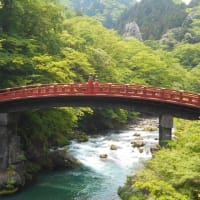
3. Characteristics of European Civilization
European civilization seems to be more similar to Islamic civilization than Chinese or Indian civilization. It is cosmopolitan and networked. The original form of European civilization was created in the 9th century during the time of Charlemagne, when the currents originating from Greece and Rome, the currents originating from Eastern Christianity, and the currents originating from Germanic culture merged. After that, it formed a military culture and a hierarchical culture (similar to India in this respect) while being attacked by foreign tribes many times, and while being subjected to external forces from Islam, it absorbed the seeds of science and a cosmopolitan and networked culture from Islam, and eventually overtook Islamic civilization. At the end of the line, there was a scientific and commercial nation, and it reached the Industrial Revolution. The Industrial Revolution was an opportunity to give the power of efficiency: the second principle (principle of improving living standards) more power than the power of social structure: the third principle (principle of community development).
To name a few features:
1. Germanic elements (assembly and aristocracy) were thought to be strong. Compared to Islamic and other civilizations, Europe had less of a monarchical and autocratic element. Although bilateralism also had elements of Roman law, compared to the later development of Byzantium, the European civilization created a social structure that was the premise of the agricultural revolution (for example, three-field agriculture: a structure in which each member of a village had a role), and repeated invasions by foreign tribes created contracts for feudal lords to obtain security. In addition, although democracy and aristocracy later became a conflict, the aspect of personal rule by the aristocracy remained strong , so it cannot be said to be simply contractual. The way village members were organized is similar to the Indian caste system in some ways, but while Indian civilization ranked people by purity, Europe does not seem to have ranked members of the same class. This kind of ranking can be seen in Japan, although on a smaller scale, with the four classes of samurai, farmers, artisans, and merchants. This is thought to be for the purpose of dividing and governing, but in medieval Europe, people were divided into those who fought, those who prayed, and those who cultivated. The detailed hierarchy of those who fought and those who prayed was complicated (aristocratic elements), but no detailed hierarchy was created for those who cultivated. This made it easy for society to become fluid, and as agricultural productivity improved, markets (the birth of merchants) were established, trade arose, cities were established, and freedom rights in cities were asserted. The loose hierarchy and democratic nature of the peasant class led to the establishment of markets and cities , but one of the characteristics of European civilization may be that freedom was asserted through groups and networks. Islamic civilization is also powerful in terms of less hierarchy and equality, but Islamic civilization started from commerce rather than agriculture, and its approach to freedom may have been different from that of Europe. The important concept for European civilization is freedom, and this eventually led those who cultivated through productivity over those who fought and prayed .
2. The dualism of spirituality and secularity is related to the Christian aspect. Although Christian civilization came to be through Greek and Roman civilization, the original flow of Christian orthodoxy seems to have been in the Eastern Roman Empire and the Byzantine Empire. Christianity first gained its foundation in Greece, spread to the Roman Empire, and became the state religion, and Constantinople can be said to have been its center. However, Christianity gained great authority as an independent spiritual force when Rome, which had become a frontier in the 4th century, began to assert its authority in a place other than secular power. The Church remained a force because it had administrative power over the people's lives against the Germanic invasion, and the Germanic people used the Church. Monasteries were also the main driving force for land reclamation, and the monastic movement defeated secular power in the investiture movement, and an era came when the Pope was above secular power (although there were times when it was a decentralized era), but the major characteristic of European civilization was that spirituality came to the top, and this constituted the world view. You might think that these characteristics are similar to the phenomenon that gave rise to the Brahmins in the Gupta Dynasty in India and the Sufis in the Abbasid Dynasty in Islamic civilization*, but in European civilization, this phenomenon led to the Enlightenment through the Renaissance and Protestant Reformation, and led not only to the exploration of the spatial world but also to the exploration of various spiritual intellectual worlds. It was this scientific intellect that became the driving force behind the rapid advancement of European civilization.
* Perhaps behind these phenomena lies a desire for freedom from rigid systems.
3. Cosmopolitan and networked. These aspects were probably learned from Islamic civilization (Mamluks, Umayyads)*, and there were forces that expanded commerce by taking advantage of the situation of weakened religious authority and separated secular power. At first, agricultural production expanded and cities emerged in medieval Europe, constrained by the external force of Islamic civilization: the fifth principle (environmental principle and external principle), but gradually a cosmopolitan and networked society was established in medieval Europe on top of these. These cosmopolitan forces formed hegemonic structures (Fugger, Medec, Rothschild) in each era in Italy, Spain, Portugal, the Netherlands, and England.
*When talking about what was transferred from Islamic civilization to European civilization, academic knowledge is often mentioned, but how was trade know-how transferred? It was probably accumulated through Venice and other places during the course of several Crusades (including Byzantium).
all rights reserved to M Ariake


























※コメント投稿者のブログIDはブログ作成者のみに通知されます